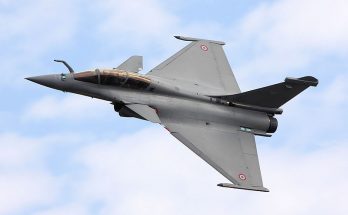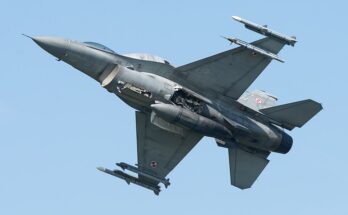The British Ministry of Defense (MoD) has published its latest Defense Equipment Plan, a rolling ten-year plan that outlines major equipment programs and funding plans. The plan involves an allocation of £186.4 billion ($244 billion) towards weapons purchases through the coming decade.
Such equipment includes the nuclear deterrent renewal program involving production of four new Dreadnought-class SSBN submarines, a second Queen Elizabeth-class aircraft carrier, a seventh Astute-class submarine (HMS Agincourt), the ongoing procurement of up to 138 F-35 stealth combat aircraft, the Project Centurion upgrade program for the fleet of Eurofighter Typhoons, some 15 naval frigates (Type 26 and Type 31e), a new class of three Fleet Solid Support ships for the Royal Fleet Auxiliary, a slew of armored vehicle projects, a missile inventory modernization effort (the Complex Weapons Program), and the necessary investments in Joint Forces Command (JFC) to improve cyber-defense, C4ISR and maintain the military satellite network.
The most costly of these projects – and the one weighing most heavily on future defense budgets – involves production of the four new Dreadnought-class SSBN submarines at £31.5 billion ($41.1 billion) alone, not to mention maintenance of the nuclear warhead stockpile and supporting infrastructure.
Add to that the cost of producing the additional Astute submarine and support costs plus additional equipment for the remainder of the inventory and submarine are projected to consume £46.6 billion ($60.9 billion) of the total £186.4 billion Defense Equipment Plan.
A major snag, however, involves matching costs with funding. The central estimated cost of the program comes to £193.3 billion ($252.7 billion), amounting to a £7 billion ($9.1 billion) deficit in the equipment plan. The anticipated shortfall is a fluid estimate, however. Variances based on efficiencies harvested by the MoD, spikes in inventory costs, delivery timelines, and defense inflation may produce gaps as wide as £2.5 billion ($3.3 billion) in the most positive scenario to £14.8 billion ($19.3 billion) in a worst-case event as per projections.
The Conservative-led government has stated that it is addressing affordability risks with appropriate spending controls and cost oversight between Treasury and the MoD on a yearly basis.
The longer term, however, presents a stiff challenge. The government’s fiscal watchdog, the National Audit Office (NAO), has noted that the Defense Equipment Plan remains unaffordable and unsustainable on a long-term value-for-money basis if efficiencies south by the MoD are not manifested. It also recommends deferring, trimming, cancelling outright some programs in order to bring the Defense Equipment Plan into line with future affordability risks.
For U.K. defense planners the seas ahead appear rough in light of economic, political and currency exchange volatility challenges, as well as recruiting and retaining the necessary military personnel and skills required to sustain the armed forces and crew, equip and maintain the incoming defense kit.
However, there appears to be one positive emerging from the publication of the latest Defense Equipment Plan: a clearer cost picture with which to gauge Defense Ministry financials.
At least it’s a start.
Dan Darling is Forecast International’s director of military and defense markets. In this role, Dan oversees a team of analysts tasked with covering everything from budgeting to weapons systems to defense electronics and military aerospace. Additionally, for over 17 years Dan has, at various times, authored the International Military Markets reports for Europe, Eurasia, the Middle East and the Asia-Pacific region.
Dan's work has been cited in Defense News, Real Clear Defense, Asian Military Review, Al Jazeera, and Financial Express, among others, and he has also contributed commentary to The Diplomat, The National Interest and World Politics Review. He has been quoted in Arabian Business, the Financial Times, Flight International, The New York Times, Bloomberg and National Defense Magazine.
In addition, Dan has made guest appearances on the online radio show Midrats and on The Media Line, as well as The Red Line Podcast, plus media appearances on France 24 and World Is One News (WION).




